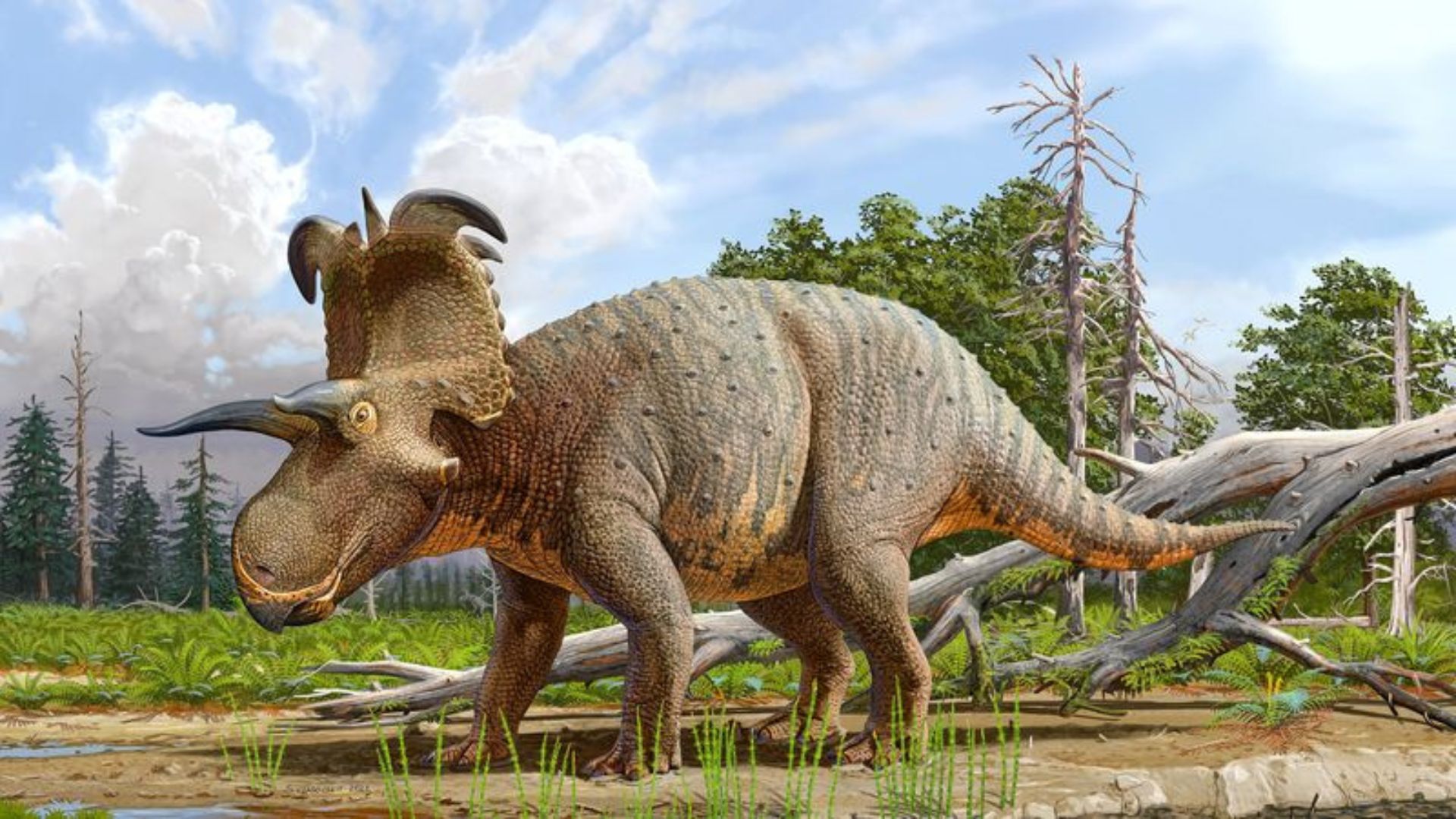The world of dinosaurs has always fascinated both scientists and the general public. Over the years, numerous discoveries have emerged, reshaping our understanding of these prehistoric giants.
This article explores twenty pivotal dinosaur discoveries that have provided new insights into their lives, behaviors, and eventual extinction. Each discovery unveils a fascinating aspect of dinosaur existence, from their physical characteristics to their ecological interactions.
1. The First Dinosaur Bone Discovery
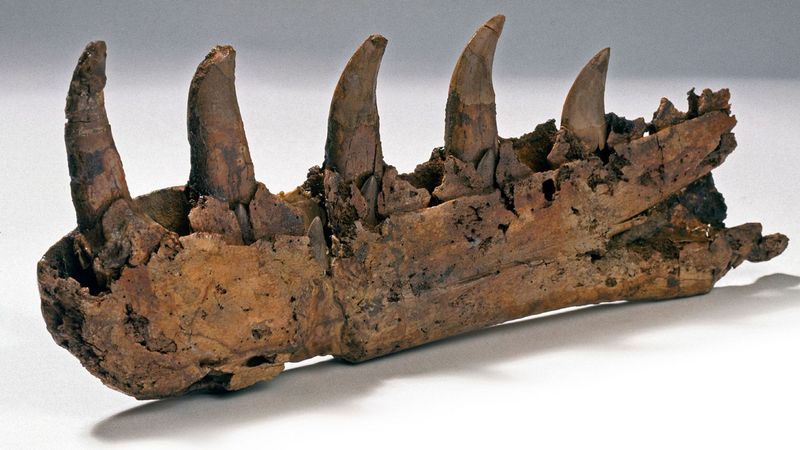
In the early 19th century, the first dinosaur bone was discovered, sparking a new era in paleontology. The bone belonged to a creature that would later be named Megalosaurus.
This discovery was crucial because it provided the first tangible evidence of the existence of ancient reptiles, leading to the eventual naming of these creatures as ‘dinosaurs.’ Paleontologists were now able to piece together the mysteries of prehistoric life based on fossil evidence.
This initial find led to further explorations, uncovering more bones and eventually entire skeletons. It was a groundbreaking revelation that introduced the scientific community to a whole new world of extinct creatures.
The discovery of this first bone marked a pivotal moment in history. Scientists became intrigued by the size and structure of the bone, which hinted at enormous creatures that once roamed the Earth.
This curiosity fueled further research and excavations, leading to more comprehensive studies of these fascinating creatures. Over time, as more bones were discovered, scientists began to reconstruct the anatomy and hypothesize about the behavior of these long-lost giants.
The Megalosaurus bone laid the groundwork for future paleontological studies, opening the door for numerous discoveries that followed.
Today, it remains a symbol of the beginning of dinosaur science, marking the start of a journey into the depths of Earth’s prehistoric past. Without this initial discovery, our knowledge of dinosaurs might have remained limited.
2. The Iguanodon And The Birth Of Dinosaur Science
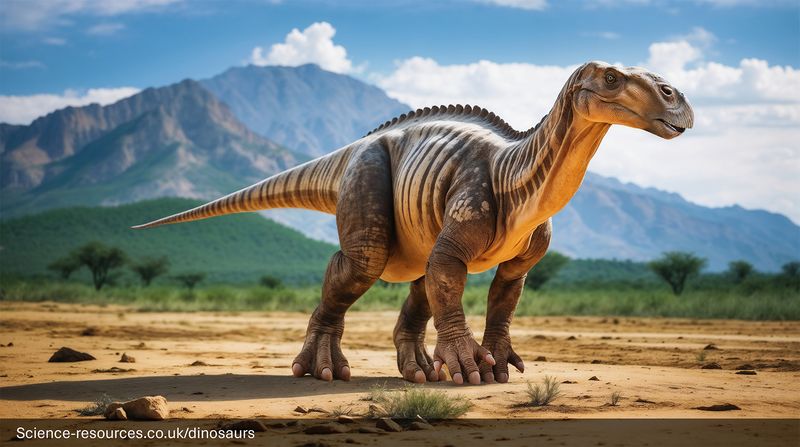
The discovery of Iguanodon fossils in the early 1820s played a pivotal role in the development of dinosaur science. These large herbivorous dinosaurs provided the first evidence that some prehistoric creatures were not reptiles but belonged to a distinct group known as dinosaurs.
The Iguanodon discovery was crucial because it revealed a creature that was unlike any living animal at that time, challenging existing classifications. The Iguanodon fossils were initially misunderstood.
Early reconstructions mistakenly placed a spike on the nose, only later identified as a thumb spike. Despite initial misconceptions, these fossils revealed critical insights into dinosaur anatomy and behavior.
They demonstrated variations in dinosaur form and function, indicating a diverse group of creatures with different adaptations. As more fossils were uncovered, scientists began to understand these creatures’ role in their ecosystems.
Iguanodon provided evidence of herbivorous dinosaurs’ existence, contrasting with the previously discovered carnivorous Megalosaurus. These findings helped establish the concept of dinosaurs as a diverse group, paving the way for future discoveries and a deeper understanding of prehistoric life.
3. The Discovery Of The Sauropods
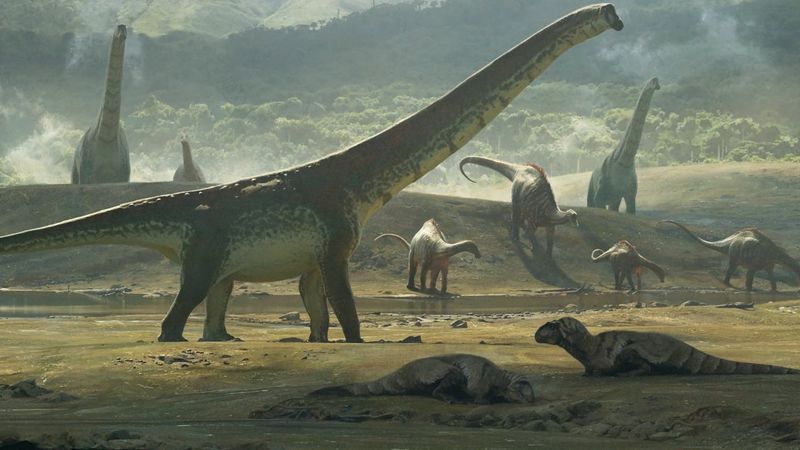
Sauropods, the gentle giants of the dinosaur world, were first discovered in the mid-19th century. These long-necked, long-tailed herbivores were among the largest animals to ever walk the Earth. Their discovery reshaped our understanding of dinosaur diversity and their ecological roles.
The sheer size of sauropods posed intriguing questions for scientists. How did such massive creatures move, eat, and survive in their environments?
These questions led to further research, revealing that sauropods had unique adaptations, including long necks for reaching high vegetation and strong, pillar-like legs to support their tremendous weight. The study of sauropods also highlighted the complexity of dinosaur ecosystems.
As more fossil evidence was unearthed, scientists began to develop a clearer picture of these giants’ lives and interactions with other species.
Sauropods became a symbol of the incredible diversity and specialization that existed among dinosaurs, illustrating the vast array of life forms that once inhabited our planet.
4. The Feathered Dinosaurs Of Liaoning, China
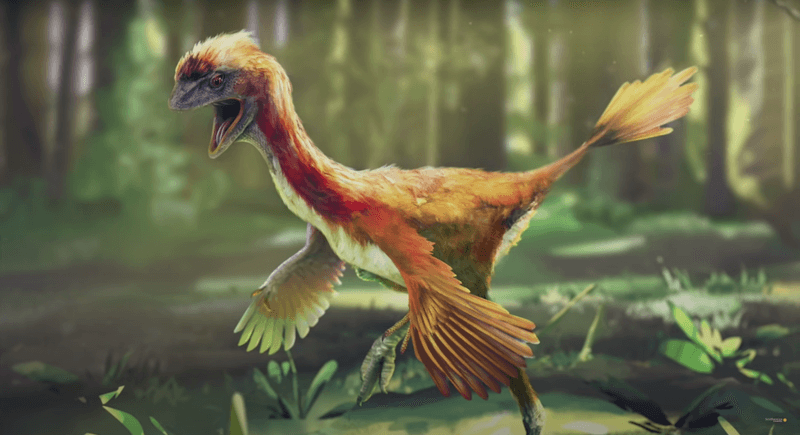
In the 1990s, a series of remarkable fossil discoveries in Liaoning, China, unveiled the existence of feathered dinosaurs. These fossils provided direct evidence that some dinosaurs had feathers, bridging the gap between birds and their dinosaur ancestors.
The discovery was groundbreaking, altering our perception of what dinosaurs might have looked like. Feathered dinosaurs like Archaeopteryx and Microraptor have feathers preserved in stunning detail.
This evidence supported the theory that birds evolved from theropod dinosaurs, a view that was previously based on anatomical similarities. The fossils displayed feathers in various stages of development, suggesting functions beyond flight, such as insulation or display.
These findings transformed our understanding of dinosaur biology and evolution. They opened new research avenues into the behavior, ecology, and evolutionary history of dinosaurs.
The discoveries in Liaoning have become some of the most significant in paleontological history, offering a vivid picture of dinosaurs’ appearance and their evolutionary journey toward becoming modern birds.
5. The Maiasaura And Dinosaur Parenting
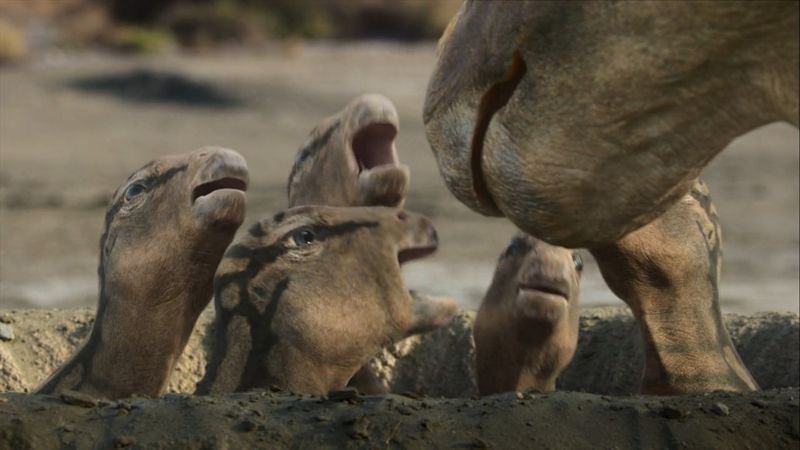
The discovery of Maiasaura, a duck-billed dinosaur, in Montana, USA, provided the first evidence of dinosaur parental care. Unearthed in the 1970s, these fossils included nests, eggs, and juvenile remains, suggesting that Maiasaura cared for their young after they hatched.
The Maiasaura discovery challenged previous assumptions that dinosaurs abandoned their eggs like most reptiles. Instead, it indicated that at least some dinosaurs engaged in nurturing behaviors, similar to modern birds and mammals.
This behavior included building nests and possibly even feeding or protecting the hatchlings. These findings have significant implications for our understanding of dinosaur social structures and behaviors.
Maiasaura’s discovery suggested a more complex social life among dinosaurs than previously thought, with parental care behaviors contributing to the survival and success of their offspring.
This has led to further studies on dinosaur reproduction, growth patterns, and family dynamics, enriching our knowledge of how these ancient creatures lived and thrived.
6. The Spinosaurus: A New Kind Of Predator
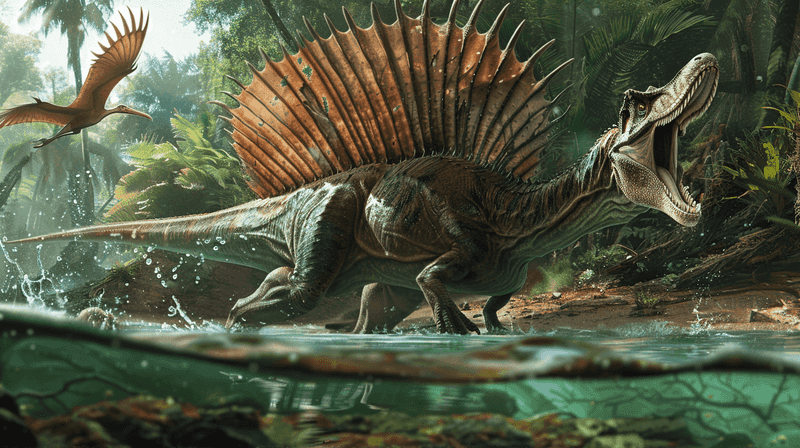
Spinosaurus, one of the most unique and controversial dinosaurs, was first discovered in the early 20th century in North Africa. With its distinctive sail-like structure on its back and crocodile-like snout, Spinosaurus stood out among theropods and provided new insights into dinosaur diversity and adaptations.
Recent discoveries and studies have suggested that Spinosaurus might have been semi-aquatic, hunting in rivers and lakes.
This would make it one of the few known aquatic or semi-aquatic dinosaurs, challenging previous conceptions of dinosaur habitats and behaviors. Its body structure hints at adaptations for swimming, such as a streamlined body and paddle-like feet.
The study of Spinosaurus has sparked debates and further research into dinosaur ecology, particularly regarding their adaptive strategies and ecological niches.
This unique predator represents a dramatic departure from the traditional view of dinosaurs as purely land-dwelling animals, offering a glimpse into the diverse lifestyles that dinosaurs might have had.
7. The T. Rex And Its Tiny Arms
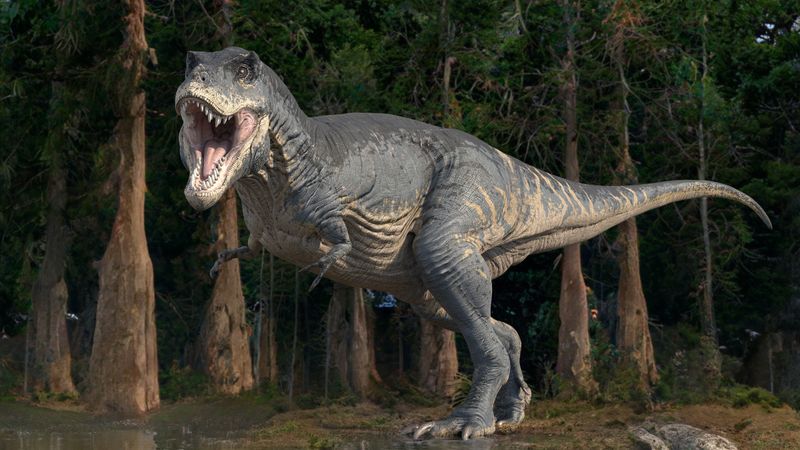
The Tyrannosaurus rex, one of the most famous dinosaurs, has puzzled scientists with its small arms. Despite its enormous size and fearsome reputation, the T. rex had disproportionately tiny arms. This peculiar feature has led to much speculation and research over the years.
Several theories have been proposed regarding the function of these small arms. Some suggest they were used for mating rituals or to help the dinosaur rise from a prone position. Others propose they served a purpose in hunting or combat, although this remains debated.
The T. rex’s tiny arms remind us of the complexity and diversity of dinosaur adaptations. This iconic dinosaur continues to captivate the public and researchers alike.
The T. rex’s arms exemplify the unexpected and varied evolutionary paths that dinosaurs took, highlighting the intricacies of their biology and the mysteries that still surround them.
Ongoing research into this and other aspects of T. rex anatomy continues to deepen our understanding of these legendary creatures.
8. Velociraptor: Not As Big As You Think
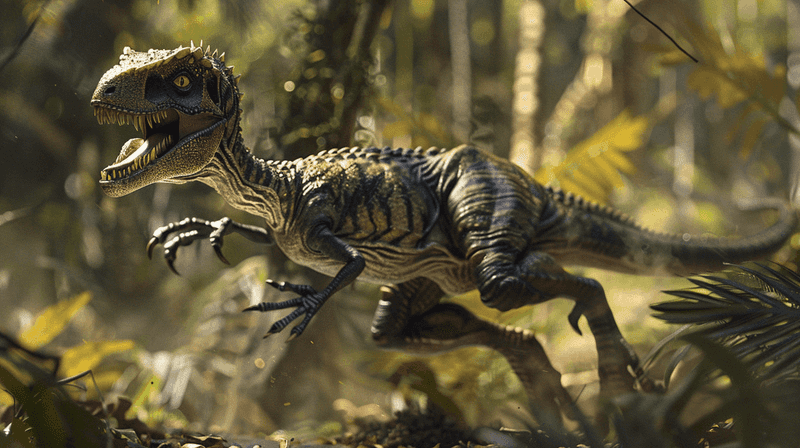
Velociraptors gained fame from popular media, often depicted as large, scaly predators. However, the real Velociraptor was much smaller and likely covered in feathers. Discovered in Mongolia, Velociraptor fossils have provided crucial insights into the appearance and behavior of this agile predator.
The discovery of Velociraptor fossils with quill knobs on their forearms suggests that these dinosaurs had feathers, possibly used for display or temperature regulation. This evidence supports the idea that many theropod dinosaurs, from which birds evolved, possessed feathers.
Velociraptors were agile hunters, using their sickle-shaped claws to capture prey. The Velociraptor’s true size and feathered appearance reveal the contrast between scientific discoveries and popular portrayals.
This dinosaur’s story underscores the importance of ongoing research in correcting misconceptions and enhancing our understanding of prehistoric life. Velociraptor continues to be a subject of fascination, representing the dynamic and ever-evolving nature of paleontology.
9. The Long-Lost Dinosaur Egg Thief: Oviraptor
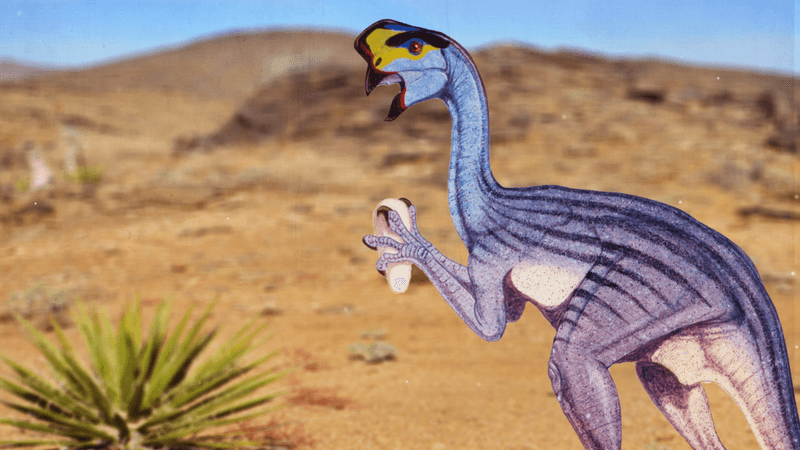
Oviraptor, once thought to be an egg thief, has undergone a significant reinterpretation. Discovered in Mongolia, fossils initially suggested that Oviraptor was stealing eggs, based on its proximity to nests.
However, further research revealed that the dinosaur was likely caring for its eggs, not stealing them. The name ‘Oviraptor,’ meaning ‘egg thief,’ was derived from this early misconception.
Later discoveries showed that the eggs belonged to Oviraptor itself, indicating brooding behavior similar to that of modern birds. This revelation provided a new perspective on dinosaur parenting and social behavior.
Oviraptor’s story highlights the evolving nature of paleontological research and the importance of re-examining evidence. It showcases the complex lives of dinosaurs and their similarities to modern birds.
The reinterpretation of Oviraptor’s behavior has contributed to a broader understanding of dinosaur reproduction and nesting habits, emphasizing the dynamic and changing field of dinosaur science.
10. Megaraptor: The Misleading Giant
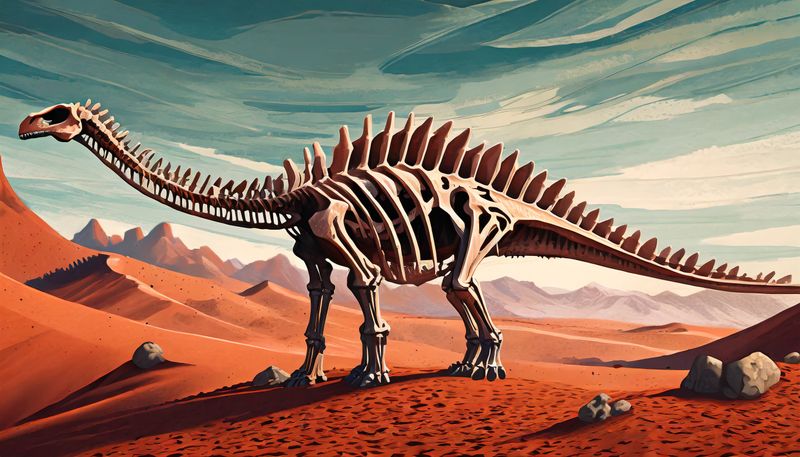
Megaraptor, initially thought to be a massive predatory dinosaur, turned out to be a different kind of creature than first imagined. Discovered in Argentina, the fossils of Megaraptor were initially misidentified due to their large claws.
The first Megaraptor discovery suggested a massive theropod with giant claws used for hunting. However, further analysis revealed that these claws did not belong to the hands, as initially thought, but were part of the foot structure.
This reclassification placed Megaraptor in a different group of dinosaurs than originally believed. Megaraptor’s story illustrates the challenges and surprises in paleontological research.
Misinterpretations can lead to new insights and understanding as new evidence emerges. The re-evaluation of Megaraptor has highlighted the importance of careful analysis and remains a testament to the evolving nature of scientific discovery in the field of paleontology.
11. The Discovery Of The Carnotaurus
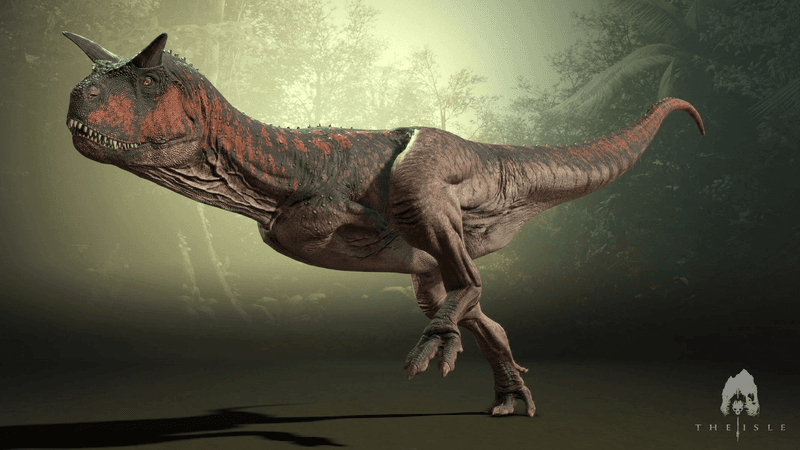
The discovery of Carnotaurus in Argentina introduced the world to one of the most distinctive theropods ever found. With its unique horns and small, vestigial arms, Carnotaurus challenged traditional views of dinosaur anatomy and behavior.
Carnotaurus’s horns, situated above its eyes, are unlike any other known dinosaur features. These horns have led to various theories about their function, including use in combat or display. The dinosaur’s small arms, reminiscent of T. rex, further added to the intrigue surrounding its anatomy.
Carnotaurus continues to captivate researchers and the public alike. Its unusual features provide a glimpse into the diverse evolutionary paths dinosaurs took.
The discovery of Carnotaurus also emphasizes the rich diversity of theropod dinosaurs in South America, contributing to a broader understanding of dinosaur evolution and adaptation.
12. The Early Bird: Archaeopteryx
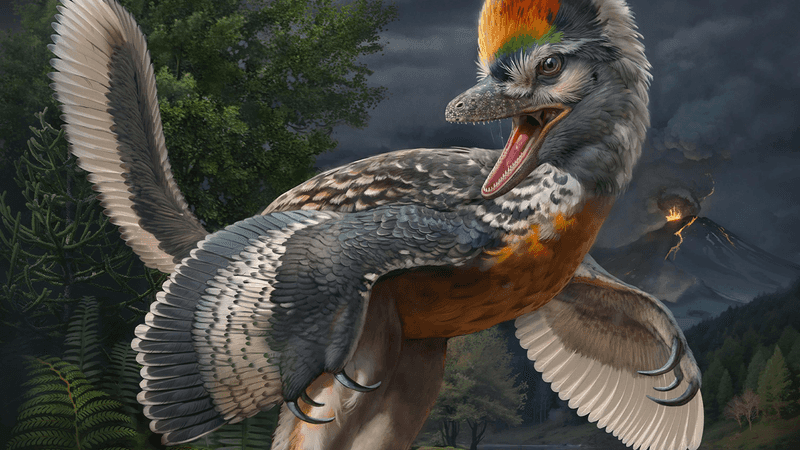
Archaeopteryx, often considered the first bird, provides a crucial link between dinosaurs and modern birds. Discovered in the late 19th century in Germany, this remarkable fossil has feathers, wings, and a bird-like skeleton, but also retains features of its dinosaur ancestors.
The Archaeopteryx fossil displays a fascinating blend of avian and reptilian characteristics. Its feathers resemble those of modern birds, suggesting the possibility of flight or gliding.
Meanwhile, its teeth, tail, and clawed fingers harken back to its theropod lineage. Archaeopteryx has long been a symbol of evolution, representing the transition from dinosaurs to birds.
This discovery has fueled debates and research on the origins of flight and the evolutionary relationship between dinosaurs and birds.
Archaeopteryx remains a cornerstone in the study of vertebrate evolution, illustrating the dynamic processes that have shaped life on Earth.
13. The Behemoth Of Patagonia: Argentinosaurus
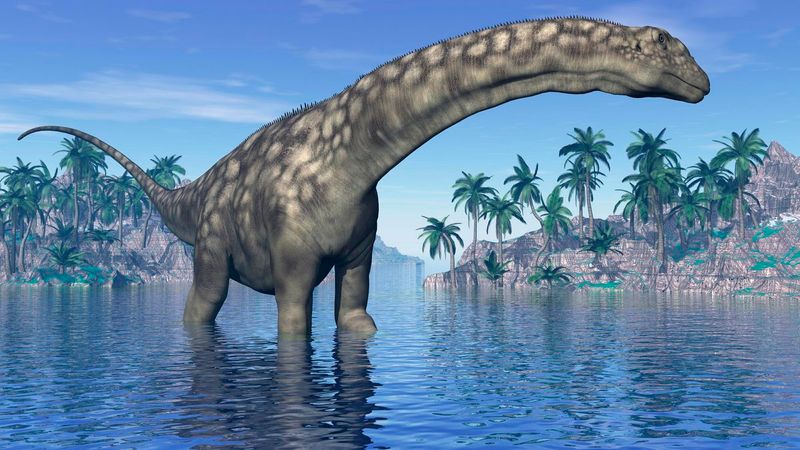
Argentinosaurus, one of the largest dinosaurs ever discovered, roamed the ancient landscapes of what is now Argentina. Measuring over 100 feet long, this sauropod set new records for dinosaur size and weight, challenging our understanding of the limits of biological growth.
The discovery of Argentinosaurus fossils has provided valuable insights into the biology and lifestyle of giant dinosaurs. Its massive size suggests specific adaptations for supporting such a large body, including strong pillar-like legs and a long neck for reaching vegetation.
These adaptations highlight the evolutionary pressures that shaped sauropod development. Argentinosaurus has captured the imagination of scientists and the public alike, symbolizing the grandeur and diversity of prehistoric life.
Its discovery underscores the incredible range of dinosaur sizes and adaptations, offering a deeper appreciation for the complex ecosystems these giants inhabited.
As research continues, Argentinosaurus remains a focal point for understanding the biology and evolution of the largest land animals ever to exist.
14. The Enigmatic Therizinosaurus
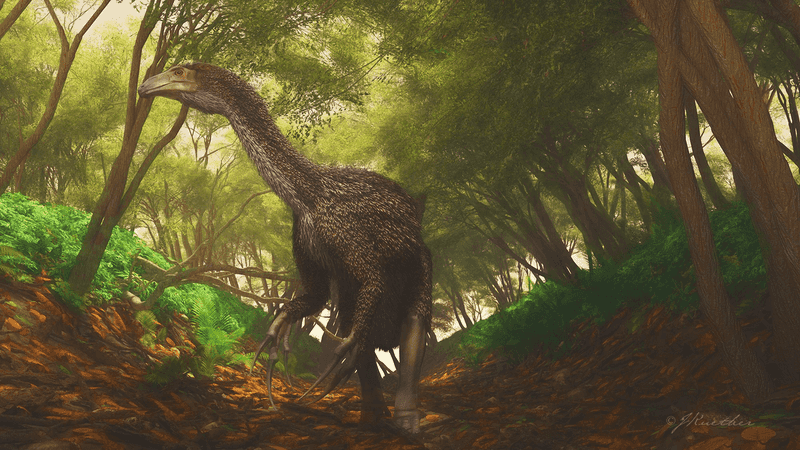
Therizinosaurus, known for its enormous claws, is one of the most enigmatic dinosaurs ever discovered. Found in Mongolia, this dinosaur defies conventional categorization with its unique mix of features.
Initially, the massive claws of Therizinosaurus led to speculation that it was a fierce predator. However, further study revealed that it was an herbivore, using its claws to pull down branches or dig for roots.
This herbivorous behavior was unexpected for a dinosaur with such formidable claws, challenging existing perceptions of dinosaur ecology. Therizinosaurus exemplifies the surprises and complexities of dinosaur evolution.
Its mix of characteristics from different dinosaur groups highlights the adaptive possibilities that evolved in response to environmental pressures.
As research continues, Therizinosaurus remains a testament to the diversity and adaptability of dinosaurs, sparking curiosity and further study into these ancient creatures.
15. The Cretaceous Superbird: Quetzalcoatlus
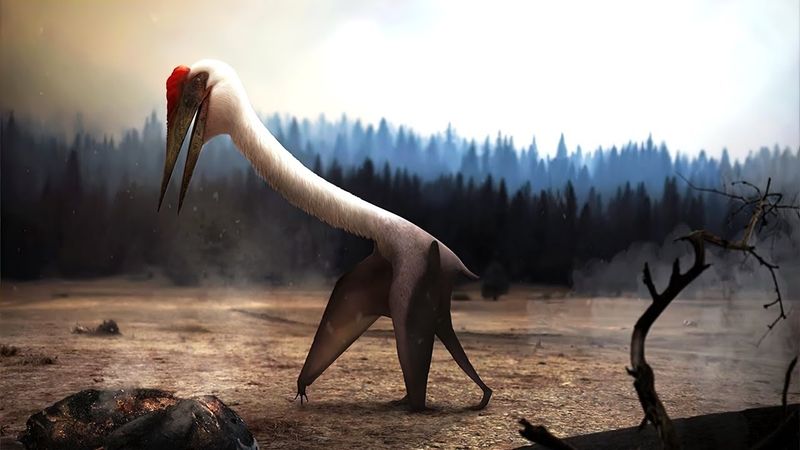
Quetzalcoatlus, one of the largest flying creatures ever, soared through the skies of the late Cretaceous period. Discovered in Texas, USA, this pterosaur boasted an impressive wingspan of up to 40 feet, rivaling that of a small aircraft.
The discovery of Quetzalcoatlus has provided insights into the capabilities and adaptations of these enormous flyers. Its lightweight skeletal structure, combined with large wings, suggests it was capable of long-distance flight, possibly migrating across continents.
This ability would have given Quetzalcoatlus access to various ecological niches and resources. Quetzalcoatlus represents the zenith of pterosaur evolution, illustrating the remarkable diversity and specialization of flying reptiles.
Its discovery highlights the complex ecosystems of the Cretaceous period, where such large predators could thrive. Continuing research on Quetzalcoatlus and other pterosaurs sheds light on the evolutionary history of flight and the role of these creatures in prehistoric ecosystems.
16. The Giant Of The Jurassic: Brachiosaurus
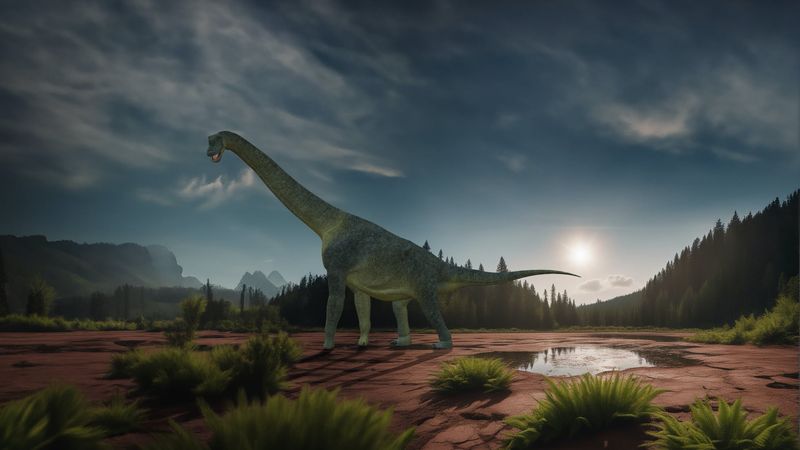
Brachiosaurus, a towering sauropod from the Jurassic period, has long fascinated scientists and the public. Known for its long neck and massive size, Brachiosaurus provides insights into the biology and ecology of giant dinosaurs.
Unlike many other sauropods, Brachiosaurus had an elevated body posture, with front legs longer than its hind legs. This unique structure allowed it to reach high vegetation, giving it access to a food source that other herbivores could not exploit.
Its body design illustrates the diverse adaptations that dinosaurs evolved to thrive in their environments. The discovery of Brachiosaurus has contributed to our understanding of sauropod diversity and specialization.
Its massive size and unique feeding adaptations highlight the ecological roles these giants played in their ecosystems. Brachiosaurus continues to capture the imagination, symbolizing the incredible diversity and majesty of prehistoric life.
17. The Mystery Of The Duck-Billed Dinosaur: Parasaurolophus
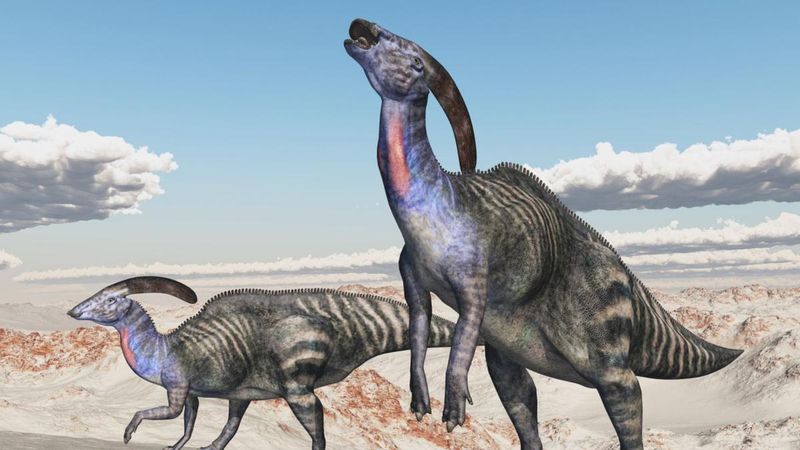
Parasaurolophus, known for its striking cranial crest, is one of the most recognizable duck-billed dinosaurs. Discovered in North America, this dinosaur has intrigued scientists with its unique headgear.
The crest of Parasaurolophus is thought to have served several functions, including vocalization, display, and thermoregulation. The hollow structure of the crest suggests it could produce distinct sounds, possibly used for communication within herds.
This feature highlights the complexity of dinosaur behavior and social interactions. The discovery of Parasaurolophus has enriched our understanding of hadrosaurid dinosaurs, showcasing the diversity of forms and functions they evolved.
Its distinctive appearance and possible behaviors provide a glimpse into the dynamic and interactive world of dinosaurs, illustrating the intricate social structures that may have existed among these ancient creatures.
18. The Armored Titan: Ankylosaurus
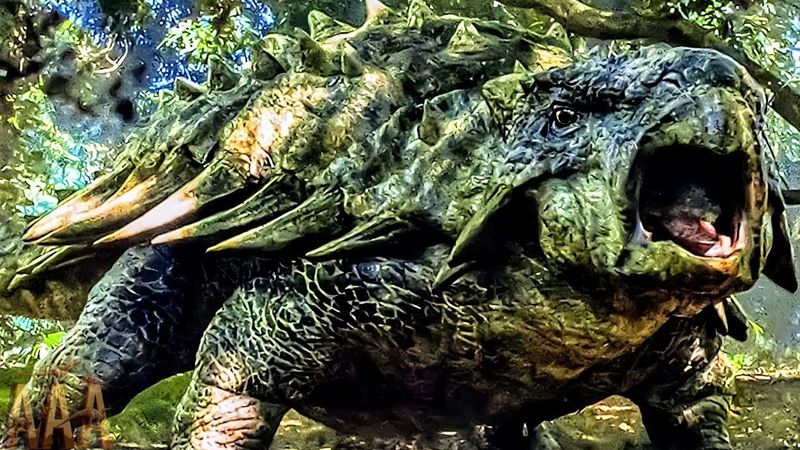
Ankylosaurus, with its heavily armored body and formidable clubbed tail, represents the epitome of dinosaur defense strategies. Discovered in North America, this dinosaur showcases the evolution of protection in response to predation pressures.
The bony plates and tough skin of Ankylosaurus provided an effective defense against predators. Its tail club, capable of delivering powerful blows, added an offensive element to its defense strategy, deterring even the most determined attackers.
These features highlight the evolutionary arms race between predators and prey in the dinosaur world. The discovery of Ankylosaurus has provided valuable insights into the defensive adaptations of dinosaurs.
Its robust armor and weaponry illustrate the complexity of dinosaur ecosystems and the diverse strategies these creatures evolved to survive.
Ankylosaurus remains a symbol of resilience and defense, embodying the intricate interplay between form and function in the natural world.
19. The Speedy Gallimimus
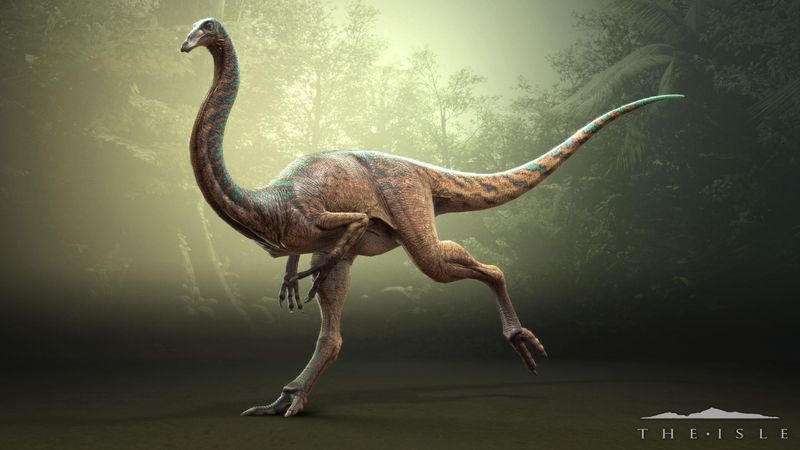
Gallimimus, a swift and agile dinosaur, was discovered in Mongolia and quickly gained attention for its speed. Resembling modern ostriches, Gallimimus had long legs and a lightweight build, allowing it to outrun predators and cover vast distances in search of food.
The discovery of Gallimimus has contributed to our understanding of dinosaur locomotion and behavior. Its anatomy suggests adaptations for speed, including strong hind limbs and a long, balanced tail for stability.
These features highlight the diverse strategies dinosaurs employed to survive and thrive in their environments. Gallimimus exemplifies the diversity of dinosaur lifestyles, illustrating the wide range of ecological niches they occupied.
As research continues, this dinosaur remains a focal point for studies on dinosaur movement and adaptation, shedding light on the dynamic and ever-changing world of prehistoric life.
20. The Herbivorous Ceratopsians
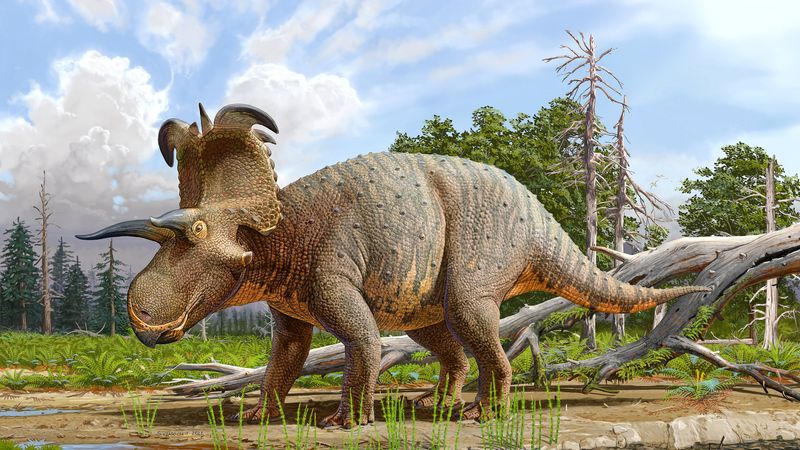
Ceratopsians, a group of herbivorous dinosaurs known for their distinctive frills and horns, have fascinated scientists and the public alike. The discovery of these dinosaurs has provided significant insights into the diversity and complexity of dinosaur ecosystems.
The frills and horns of ceratopsians, such as Triceratops and Styracosaurus, likely served multiple functions, including defense, display, and species recognition.
These features illustrate the evolutionary pressures that influenced dinosaur morphology and behavior, highlighting the intricate social structures that may have existed in ceratopsian herds. Ceratopsians represent the diverse adaptive strategies that dinosaurs evolved in response to their environments.
Their discovery has enriched our understanding of herbivorous dinosaur diversity and the ecological roles they played.
As research continues, ceratopsians remain a key focus for studies on dinosaur evolution and behavior, offering a glimpse into the rich tapestry of prehistoric life.

